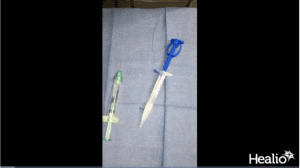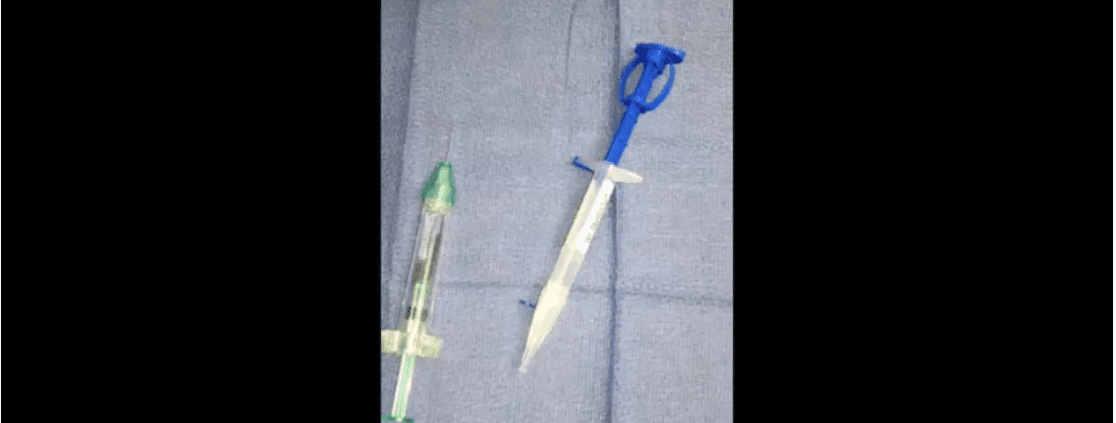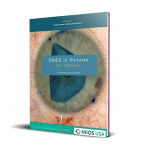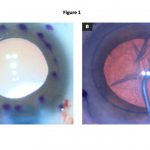Surgeon offers tips to avoid straight haptic during lens implantation
 Ultrasert is the name of Alcon’s delivery system for its preloaded AcrySof IQ IOLs. These lenses arrive already packaged inside their injector and need only priming with viscoelastic before delivery.
Ultrasert is the name of Alcon’s delivery system for its preloaded AcrySof IQ IOLs. These lenses arrive already packaged inside their injector and need only priming with viscoelastic before delivery.
Still, the process is not entirely foolproof, and some amount of technical skill is nevertheless required. One common problem is failure of the leading haptic to curl backward over the optic face. If so, it may exit the injector sticking straight out, twisted in the wrong direction. This misconfiguration may increase the difficulty and danger of lens implantation. Here, we describe, first, tips for lens priming to avoid the straight haptic and, second, a simple rescue maneuver that enables a straight haptic IOL to be safely injected regardless.
Ultrasert priming begins with injection of an ophthalmic viscosurgical device through the fill port in the front of the device. Then, the lens stop and plunger lock are removed, and the plunger is advanced. The trick for avoiding a straight haptic is simply to advance the plunger slowly (over the span of at least 7 seconds) in one smooth and continuous motion using the palm of the hand (Figure 1, Video 1). Slow forward advancement permits the haptic time to curl in the proper direction, and pushing with the palm avoids imparting any rotational twist to the plunger, which may be inadvertently administered when using a thumb. Going slow and palm pushing are enough to prevent 99% of straight haptics. For the remaining 1%, any blunt-tipped secondary instrument can be inserted into the mouth of the injector and gently used to tease the straight haptic back, over the optic face. This is easily done by a technician assistant and without the use of a microscope. As a result, the lens may be handed off to the surgeon properly curled, ready for injection, in virtually 100% of cases.
Nevertheless, if a surgeon should encounter a straight haptic, a simple modification to the standard lens insertion technique permits a normal delivery. After placement through the main wound, the injector should be rotated clockwise, so its bevel/nozzle opening faces to the left. Advance the plunger and inject the lens slowly, watching the leading haptic. Just before the optic exits, rotate the injector back (counterclockwise) into its normal position to complete lens delivery. This little trick of clockwise then counterclockwise rotation can compensate for the twisted geometry of the straight haptic and facilitate normal lens insertion even when the lens is misloaded.
An even simpler, if less elegant, compensatory technique is to initially deliver the IOL into the anterior chamber (where there is more room and the visibility is better), and only after unfolding is complete, then manipulate the lens down into the capsular bag.
With these tactics or their combination, most straight/twisted haptics can be prevented, and the lingering few may be solved without difficulty.





Leave a Reply
Want to join the discussion?Feel free to contribute!